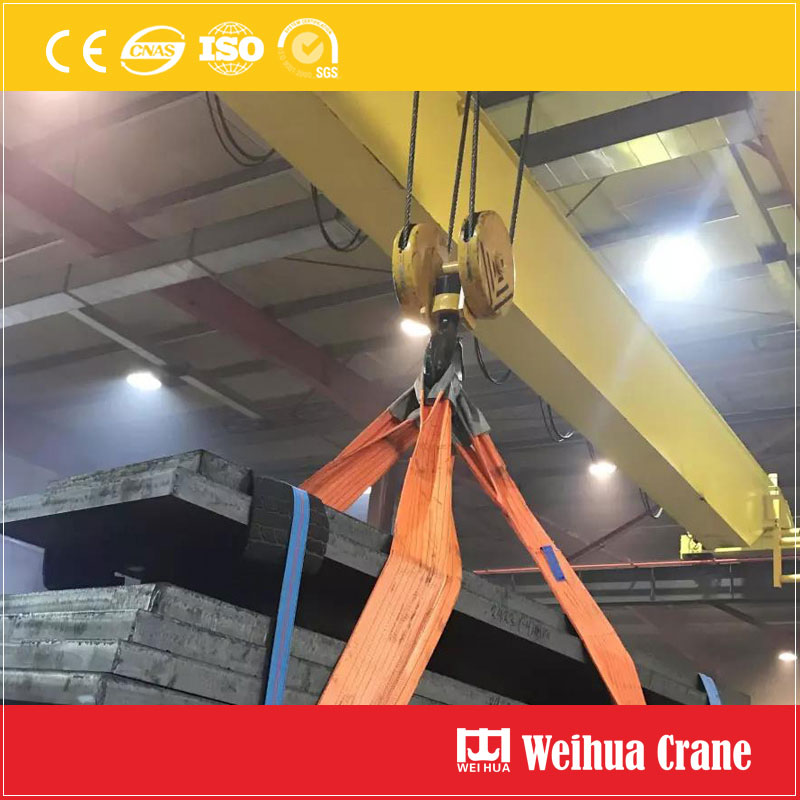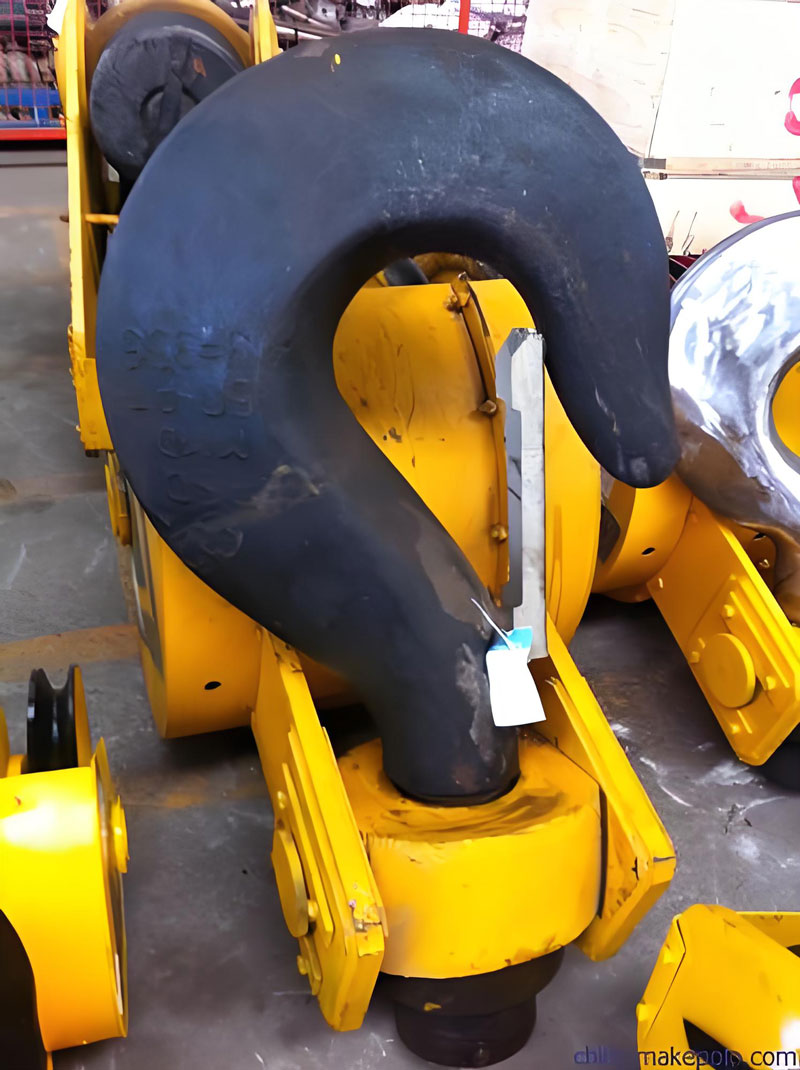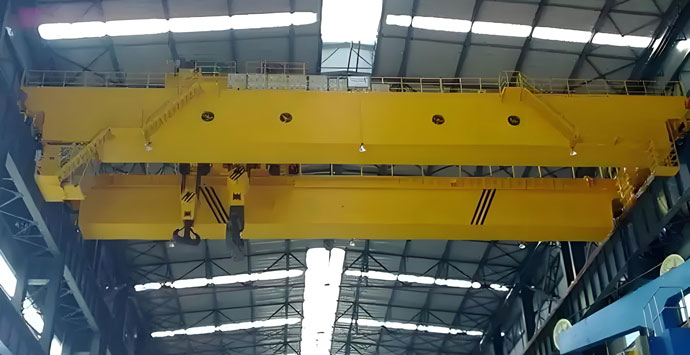Crane hook crack detection methods
2025-08-25
The crane hook is a deceptively simple component, bearing the immense responsibility of lifting and securing heavy loads. وفشلها ليس خيارا. A cracked crane hook can lead to catastrophic accidents, causing severe injury, fatalities, and massive property damage. This makes a robust and regular inspection regimen, specifically focused on crane hook crack detection methods, absolutely critical for any operation involving overhead lifting.
This guide explores the most common and effective non-destructive testing (NDT) techniques used to identify cracks and flaws in crane hooks before they become a critical safety hazard.

Why Crane Hook Crack Detection is Non-Negotiable
Crane hooks are subjected to constant stress, تعب, and potential overload. Cracks often begin microscopically in high-stress areas like the throat (the inner curved section) and the saddle (the top bearing point). These flaws are invisible to the naked eye but can propagate with each lift, eventually leading to sudden, brittle fracture.
Regular inspection using proven crane hook crack detection methods is the only way to:
- 1. Ensure Operational Safety: Protect personnel and assets.
- 2. Maintain Compliance: Adhere to OSHA, ASME B30.10, and other stringent international standards.
- 3. Prevent Costly Downtime: Unplanned failures halt entire operations.
- 4. Extend Equipment Life: Identify issues early for repair or replacement.

قمة 5 Crane Hook Crack Detection Methods
1. التفتيش البصري (VI)
The first and most fundamental line of defense.
- How it Works: A certified inspector meticulously examines the hook for any signs of wear, تشوه, twists, or visible surface cracks. This is often aided by tools like magnifying glasses, mirrors, and good lighting.
- الأفضل ل: Routine pre-shift and frequent inspections. It can identify obvious issues but cannot detect subsurface or hairline cracks.
- Standard Requirement: Mandated by ASME B30.10 for daily and monthly inspections.
2. Magnetic Particle Testing (MT)
One of the most reliable and widely used crane hook crack detection methods for ferromagnetic materials (like most alloy steel hooks).
- How it Works: The hook is magnetized. If a surface or near-surface crack is present, it creates a leakage field. Fine iron particles (either dry or in a liquid suspension) are applied and are attracted to this leakage field, forming a visible indication exactly outlining the crack.
- الأفضل ل: Finding fine, surface-breaking cracks that are invisible to the eye. It is highly sensitive and provides immediate results.
- قيود: Only works on ferromagnetic materials and requires proper demagnetization after testing.
3. Dye Penetrant Testing (PT)
An excellent method for detecting surface defects on non-ferrous materials or when magnetization is not possible.
- How it Works: A brightly colored or fluorescent dye is applied to the surface of the cleaned hook. The dye is drawn into any surface-breaking defects by capillary action. After a dwell time, excess dye is removed, and a developer is applied. The developer acts like a blotter, pulling the trapped dye back to the surface to reveal a vivid indication of the crack.
- الأفضل ل: Inspecting non-magnetic hooks (على سبيل المثال, الفولاذ المقاوم للصدأ, aluminum) or complex geometries. It is portable and relatively low-cost.
- قيود: Only detects defects open to the surface; cannot find subsurface flaws.

4. Ultrasonic Testing (يوتا)
A advanced technique for detecting deep subsurface flaws and measuring crack depth.
- How it Works: A UT probe (transducer) sends high-frequency sound waves into the hook material. The waves travel through the metal and bounce back when they hit a discontinuity, like a crack or void. The reflected waves are analyzed to determine the size, location, and orientation of the flaw.
- الأفضل ل: Crane hook crack detection in critical areas, measuring material thickness, and finding flaws buried deep within the hook’s structure. It is highly accurate for volumetric inspection.
- قيود: Requires a highly skilled technician to operate and interpret results correctly.
5. Eddy Current Testing (ET)
An effective method for detecting surface and near-surface cracks, especially on conductive materials.
- How it Works: A small probe carrying an alternating current generates a magnetic field, inducing circular electrical currents (eddy currents) in the hook. Any crack or discontinuity will disrupt these eddy currents, which is measured by the probe and displayed on a screen.
- الأفضل ل: Rapid scanning of large areas and detecting fine surface cracks. It does not require direct contact or surface coupling.
- قيود: Depth of penetration is limited, and it is generally not suitable for subsurface flaws deep within thick sections.
| Method |
الأفضل ل |
Limitations |
Surface/Subsurface |
| Visual (VI) |
Routine checks, obvious damage |
Cannot find small or hidden cracks |
Surface Only |
| Magnetic Particle (MT) |
Ferrous metals, surface cracks |
Only for magnetic metals, requires demag |
سطح & Near-Surface |
| اختراق صبغة (PT) |
All materials, surface cracks |
Messy, only surface defects |
Surface Only |
| Ultrasonic (يوتا) |
Subsurface flaws, depth sizing |
Requires skilled technician |
Subsurface |
| Eddy Current (ET) |
Conductive metals, fast scanning |
Limited depth penetration |
سطح & Near-Surface |

Choosing the Right Crane Hook Crack Detection Method
The best method depends on several factors:
- 1. مادة ربط: Ferromagnetic vs. non-ferromagnetic.
- 2. Type of Flaw: Surface crack vs. internal flaw.
- 3. Criticality of Application: The consequence of failure.
- 4. Access and Environment: Field vs. workshop conditions.
- 5. Regulatory Compliance: Specific standards may mandate certain methods.
A combination of methods is often used for a thorough inspection—for example, Visual and Magnetic Particle testing for annual certifications.

خاتمة: Safety Through Proactive Inspection
There is no single “best” crane hook crack detection method; there is only the most appropriate method for your specific situation. Ignoring this critical maintenance aspect is a gamble with the highest possible stakes.
Implementing a scheduled inspection program that combines daily visual checks with periodic formal NDT inspections by certified professionals is the definitive way to ensure lifting safety, maintain regulatory compliance, and protect your most valuable assets: your people and your productivity.
Always consult a certified NDT technician to determine the optimal inspection protocol for your equipment.






أحدث التعليقات